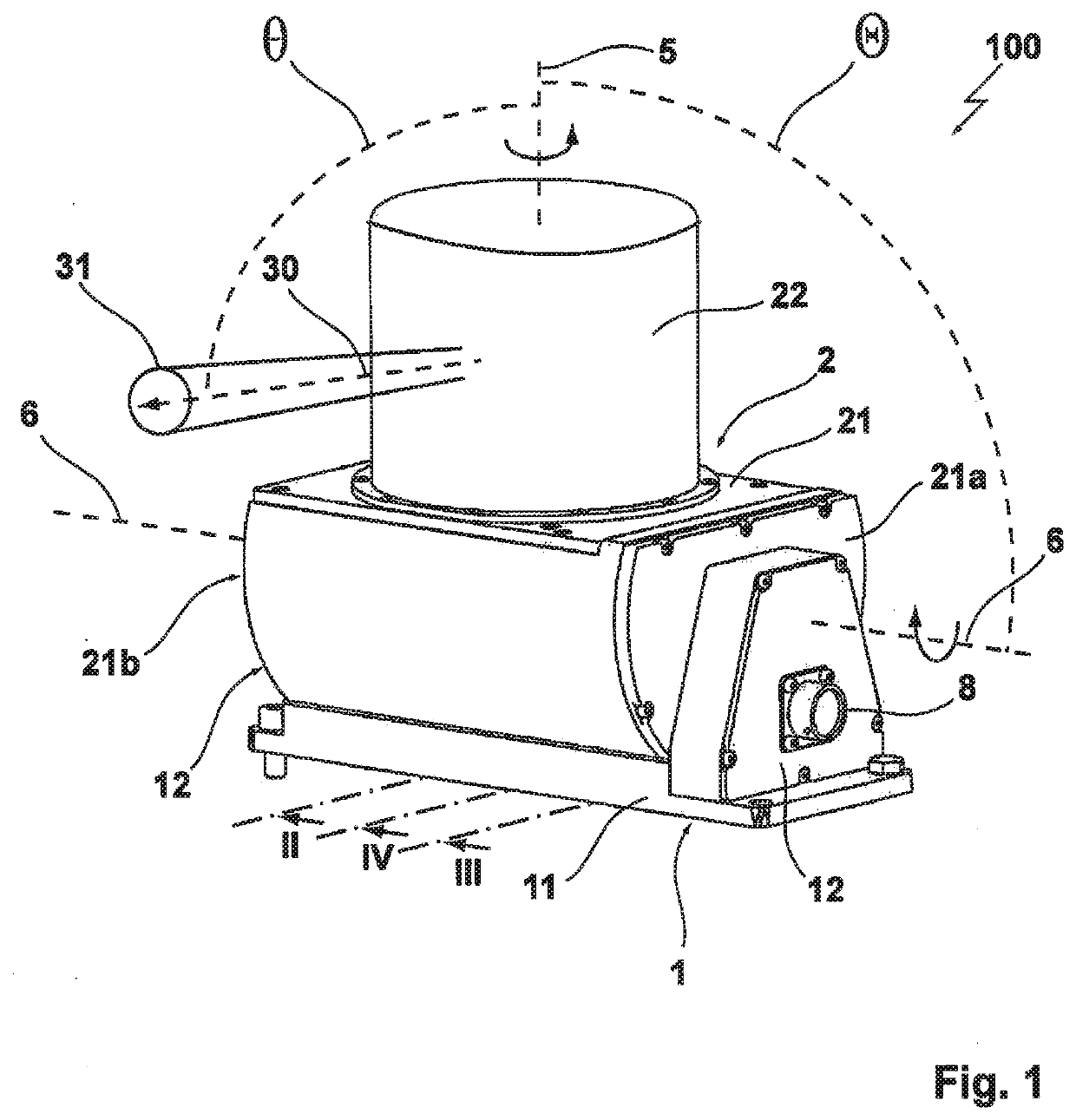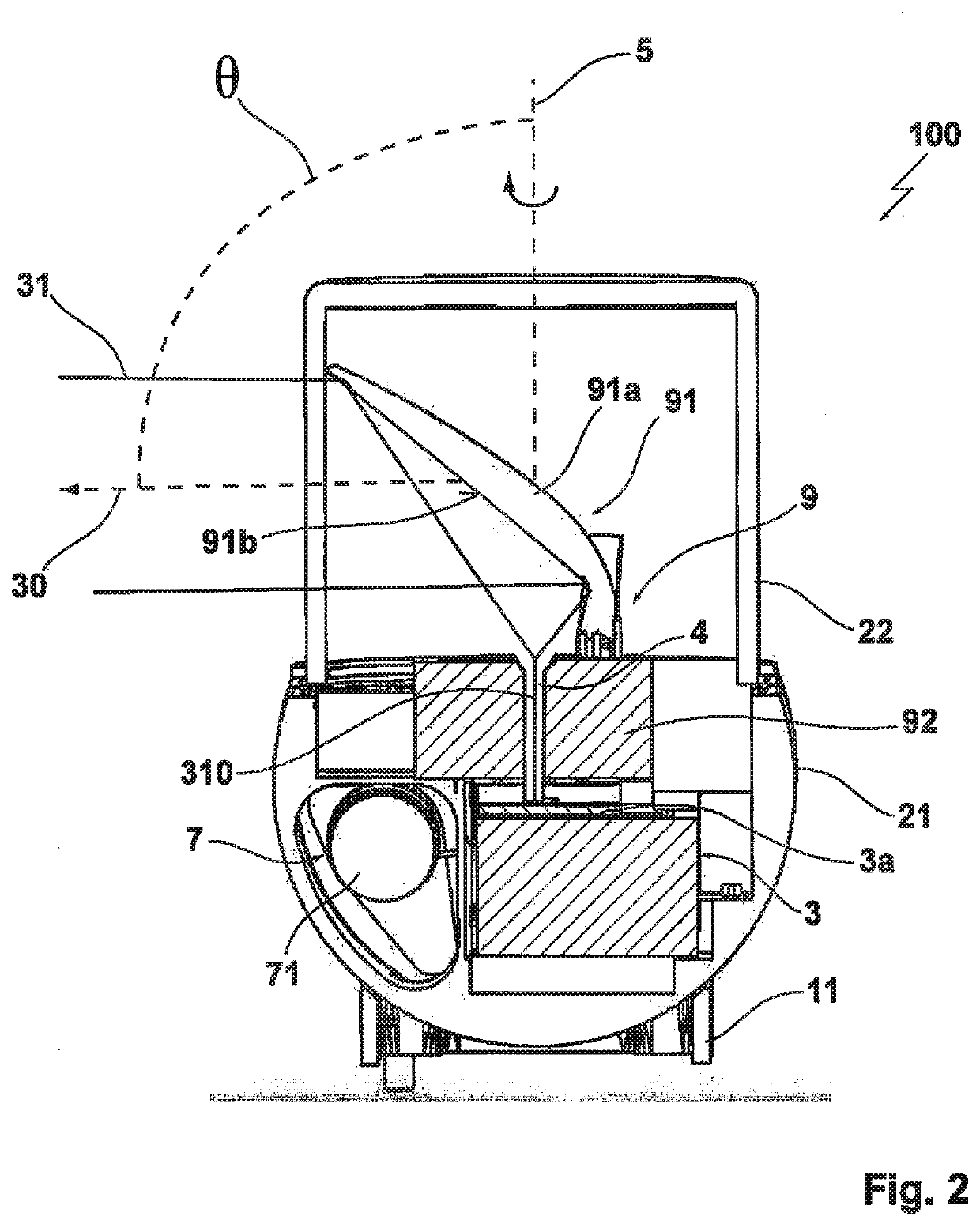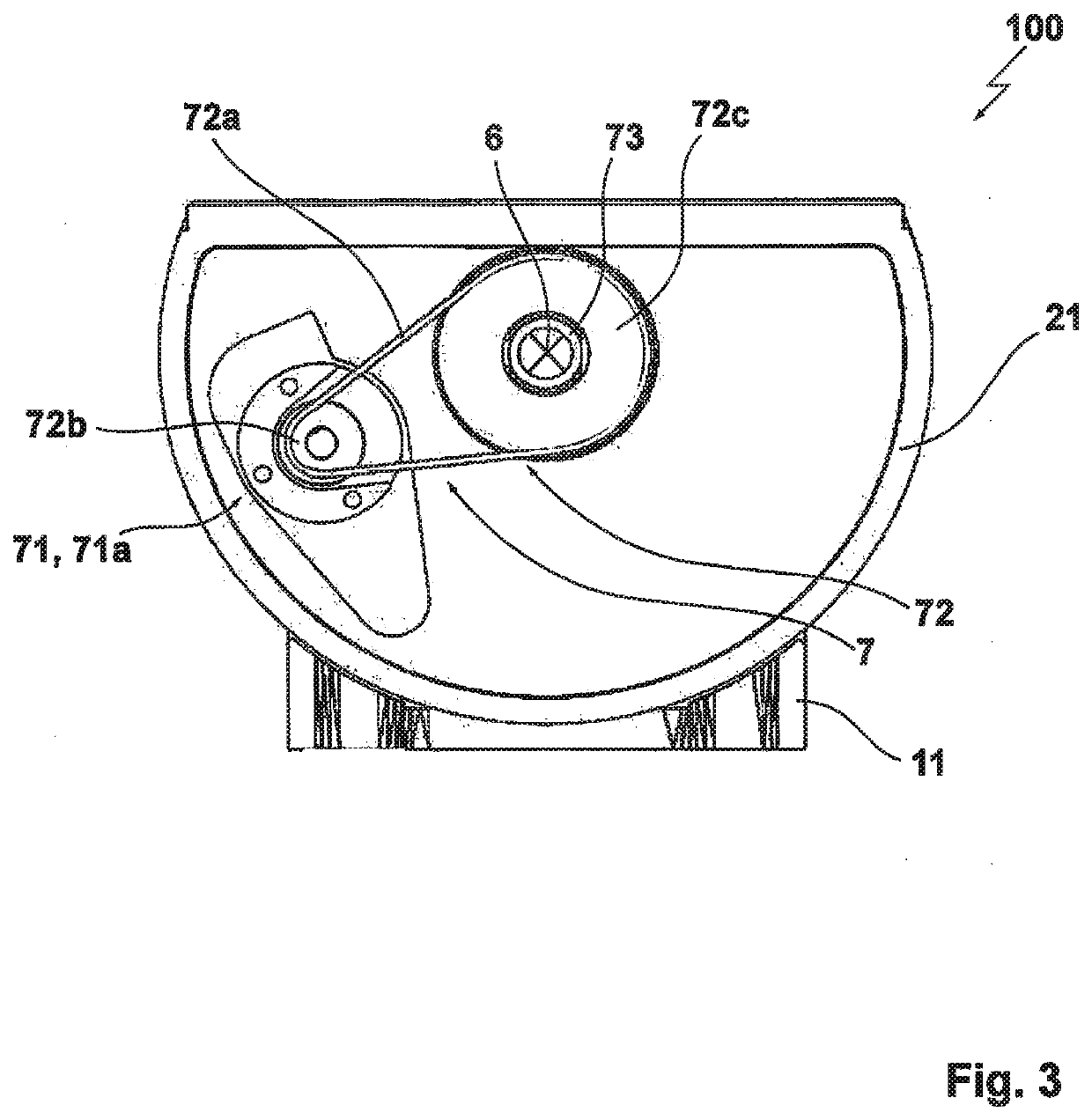Radar sensor
a technology of radar sensor and sensor body, applied in the field of radar sensor, can solve the problems of limited solid angle of the monitored field of view, disadvantage of using a plurality of differently positioned radar sensors, and impaired spatial resolution and angular resolution of radar measurement, so as to improve the stability and susceptibility of radar sensor vibration, improve the accuracy of measurement, and reduce the weight
- Summary
- Abstract
- Description
- Claims
- Application Information
AI Technical Summary
Benefits of technology
Problems solved by technology
Method used
Image
Examples
Embodiment Construction
[0021]Further measures improving the invention will be shown in more detail below together with the description of a preferred embodiment of the invention with reference to the Figures. There are shown:
[0022]FIG. 1 a schematic representation of an embodiment of the radar sensor in accordance with the invention;
[0023]FIG. 2 a first sectional representation of the embodiment;
[0024]FIG. 3 a second sectional representation of the embodiment;
[0025]FIG. 4 a third sectional representation of the embodiment; and
[0026]FIG. 5 a schematic representation of an exemplary use of the radar sensor in accordance with the invention for bulk good detection.
[0027]FIG. 1 shows a schematic representation of an embodiment of the radar sensor 100 in accordance with the invention from which in particular the positional relationships between the radiation direction 30 of the primary signal 31, the axis of rotation 5, and the pivot axis 6 in accordance with the invention can be seen. Both the angle θ between ...
PUM
 Login to View More
Login to View More Abstract
Description
Claims
Application Information
 Login to View More
Login to View More - R&D
- Intellectual Property
- Life Sciences
- Materials
- Tech Scout
- Unparalleled Data Quality
- Higher Quality Content
- 60% Fewer Hallucinations
Browse by: Latest US Patents, China's latest patents, Technical Efficacy Thesaurus, Application Domain, Technology Topic, Popular Technical Reports.
© 2025 PatSnap. All rights reserved.Legal|Privacy policy|Modern Slavery Act Transparency Statement|Sitemap|About US| Contact US: help@patsnap.com



